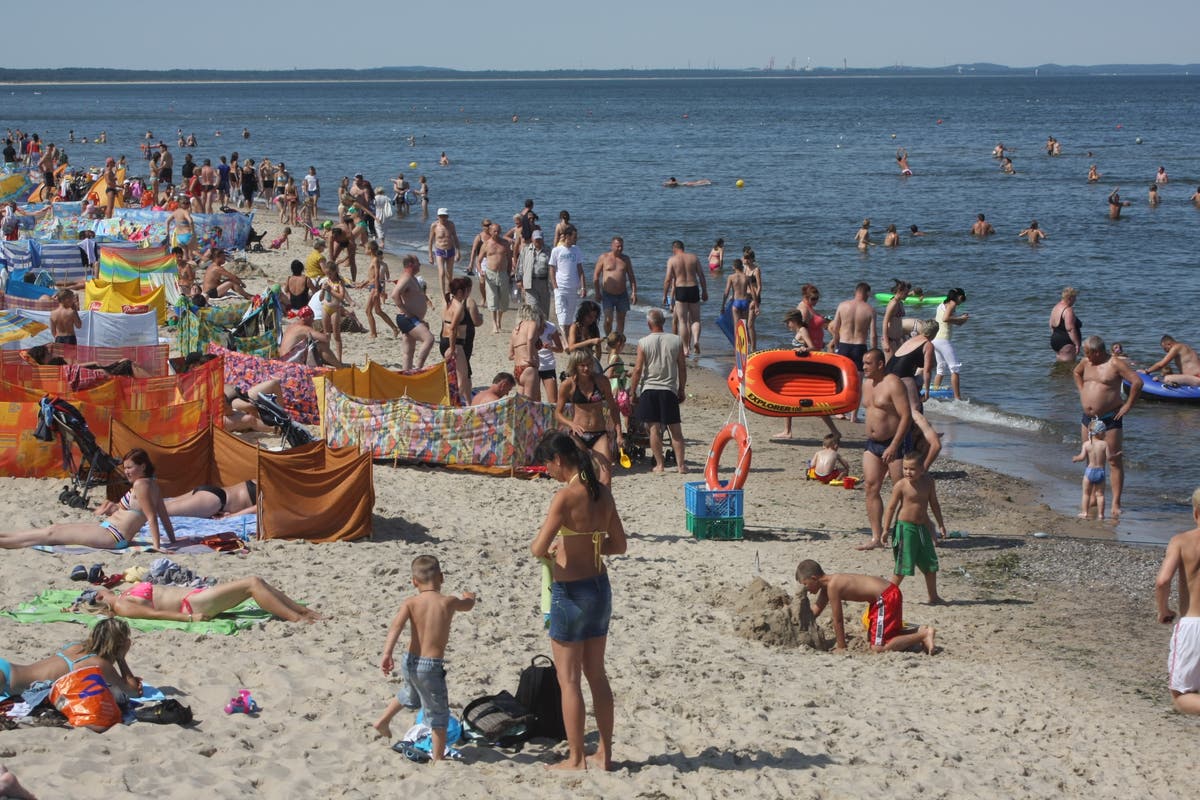Europe heatwave: Is it safe to travel to Italy, Spain, Greece and Croatia?
A deadly heatwave is sweeping Europe, with ground temperatures in Spain hitting more than 60C

Sign up to Simon Calder’s free travel email for expert advice and money-saving discounts
Get Simon Calder’s Travel email
Travellers from the UK, US and elsewhere in the world may be looking with concern at planned trips to the Mediterranean.
As the busiest summer getaway since 2019 begins, travellers to southern Europe are likely to experience extreme heat. An area of high pressure appears to have settled over the Med with little sign of abating.
The deadly “Cerberus” heatwave (so named by Italian meteorologists) is gripping southern France, Spain, Italy, Croatia, Greece and Turkey, as well as smaller countries in the Mediterranean region.
While the heat in western Europe may ease slightly over the next few days, the eastern Mediterranean is likely to get even hotter.
With forecasters predicting the heatwave could last for up to two weeks, concerns are growing about the risks to health. As The Independent reported this week, 61,000 Europeans are believed to have died as a result of the extreme heat last summer.
For travellers contemplating their options, these are the key questions and answers.
Where are the hottest spots?
Temperatures around the Mediterranean are typically 8–13C above normal – which, at this time of year, means temperatures are very high by the standards of the UK.
On Wednesday afternoon, the temperature at Malaga on Spain’s Costa del Sol peaked at 43C – over 110F.
The Met Office forecast for southern Spain predicts completely clear skies from Saturday 16 to Wednesday 26 July inclusive.
Nine Italian cities, including Florence, Bologna and Rome, are on red alert because of the extreme weather. One forecast for the islands of Sicily and Sardinia put the possible temperature as high as 48C (118F).
The Cyprus Department of Meteorology says: “The maximum temperature is expected to reach around 40 degrees Celsius over inland areas and around 32 degrees Celsius over the highest mountainous areas.
“During Friday and Saturday the temperature is expected to increase further.”
Away from the Mediterranean, the landlocked countries of Hungary and Serbia have issued severe heat warnings.
What are the health risks – and how can they be reduced?
Young and old traveller, and those with pre-existing medical conditions (especially cardiovascular and respiratory) are particularly susceptible to excess heat.
The NHS Scotland Fit For Travel website warns: “Exposure to high temperatures can result in loss of fluids and salts.
“When the body gets overheated, blood is directed away from the centre of the body by relaxation of the blood vessels, this causes sweating and cooling.
“Rapid dehydration may occur in hot dry conditions. Humidity can reduce the rate of sweat evaporation making it difficult to regulate the body’s temperature.”
More serious disorders include:
“Heat exhaustion and heatstroke are related conditions that can have a serious outcome if not treated promptly. Symptoms of heat exhaustion include a body temperature above 38C, fast breathing and pulse, dizziness, headache and confusion.
“Sudden fainting in the heat may occur when travellers are not acclimatised. Fainting occurs when the blood vessels relax to increase the circulation and radiate heat from the skin. This also has the effect of lowering the blood pressure and reducing the blood supply to the brain. Consciousness should quickly return once the person is lying flat.”
How can I reduce the risks?
Obvious steps include avoiding being outside during the hottest part of the day (typically 11am-3pm); wearing light, loose clothing and a hat; and drinking plenty of water (possibly with hydration salts). Dark urine is a certain indication you need to up you fluid intake.
The NHS say: “Limit physical exertion until you have become acclimatised, most travellers will adapt to higher temperatures in approximately 10 days
“Clothing should be light and airy – avoid wearing dark or tight-fitted clothing.
“A hand-held personal fan may prove invaluable when it is not possible to escape heat.”
Age UK offers advice specifically for older people, which includes the possibly disappointing recommendation: “Avoid alcohol, and keep eating even if you’re not feeling too hungry.”
If someone in my party is in a risk group, can I cancel the trip and get a full refund?
Unlikely. If you have booked a package holiday it is always worth talking to the tour operator in case they can offer any flexibility, but there is no legal obligation for them to allow you to switch.
Under the Package Travel Regulations, you can transfer a proper package holiday to someone else for a nominal fee of perhaps £50 per person.
If you have a travel insurance policy in which you have declared a pre-existing medical condition, you may have grounds for a claim.
Will the extreme heat affect transport?
Quite possibly. In the UK last July, when the country experienced the hottest spell on record, rail services were drastically reduced and many cancellations made – because of concern about the steel rails buckling.
While Mediterranean nations are prepared for significantly higher temperatures, if unprecedented heat is experienced some departures could be interrupted.
Transport providers may also cancel some services to protect their staff.
What about aviation?
Planes are perfectly able to take off in all but the highest temperatures – as they do routinely from airports in the Gulf and the southwestern US. But high air temperatures require a higher take-off speed, which can impact the maximum weight at which an aircraft can be dispatched.
Extreme heat may also increase the risk of thunderstorms in the Mediterranean region, which will certainly impact aviation as pilots avoid them.
Scientists say that as the earth warms, the frequency of clear-air turbulence – in which aircraft are bumped about, sometimes to the point of causing injuries – is set to increase.
Can you recommend an easy, cool escape?
At least until Wednesday 19 July, north winds will keep Iceland at below 15C. Even if the temperature picks up after that, the highest temperature ever recorded in Iceland was 30C, in the summer of 1939.
The US, Canada and the UK have a wide range of flights to Reykjavik, the capital.

 Troov
Troov 
































